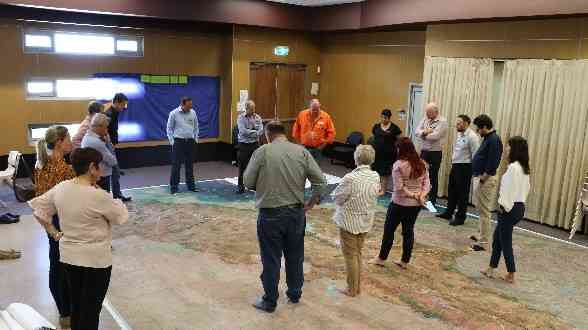Delivery of Regional Resilience Strategies in Queensland
Development of locally led, co-designed regional resilience strategies to support the coordination and prioritisation of future resilience building and mitigation projects across Queensland.
Description
By 2022, every region across Queensland will be part of a locally-led and regionally-coordinated blueprint to strengthen disaster resilience. Key project deliverables, the Regional resilience strategies and local resilience action plans, will help to keep Queenslanders safe by providing a coordinated approach to identify and prioritise disaster resilience actions.
The regional resilience strategies recognise the important role that all Queenslanders play in building resilience by incorporating integrated planning approaches that involve a range of professions and stakeholder groups.
Key components of the integrated approach that are considered in the development and planning phase of each regional resilience strategy include: physical and mental health, structural mitigation, land-use planning, building practices, economic continuity, disaster response, landscape management, essential infrastructure, community awareness and resilience.
Regional resilience strategies will be developed through a process of locally-led appreciative enquiry, resulting in the co-design of project objectives and outcomes. This project will employ integrated resilience planning across economic, human and social, built form and environmental lines of resilience.
Although developed at a regional level, regional resilience strategies will be flexible and scalable, to adapt to changing contexts and tailoring to specific community needs. This project will facilitate capacity building to support local and regional capabilities, coordinated at a regional level and supported by the State government. It will also develop prioritised resilience solutions that are matched to appropriate resources and funding opportunities.
Each regional resilience strategy will be supported by local resilience action plans that will guide implementation of resilience pathways via actions. The key objectives for a local resilience action plan are:
• addresses local needs within the context of the regional strategic imperatives;
• draws regional connections and commonalities;
• increases local government capacity and capability;
• supports local government with day-to-day activities;
• identifies risk-informed projects; and
• identifies integration pathways.
Did the Sendai Framework change or contribute to changes in your activities/organization? If so, how?
The Sendai Framework helped set the policy context for the development of the Queensland Strategy for Disaster Resilience, which includes regional resilience strategies as a resilience and disaster risk reduction capacity-building initiative for local governments across Queensland.
What led you to make this commitment/initiative?
What was your position before making this Voluntary Commitment / prior to the Sendai Framework?
The initiative was established as part of the Resilient Queensland, the implementation plan of the Queensland Strategy for Disaster Resilience.
As a State that experiences frequent and severe natural disasters, resilience planning will enable communities to be aware of their disaster risks and recover faster following a disaster event.

